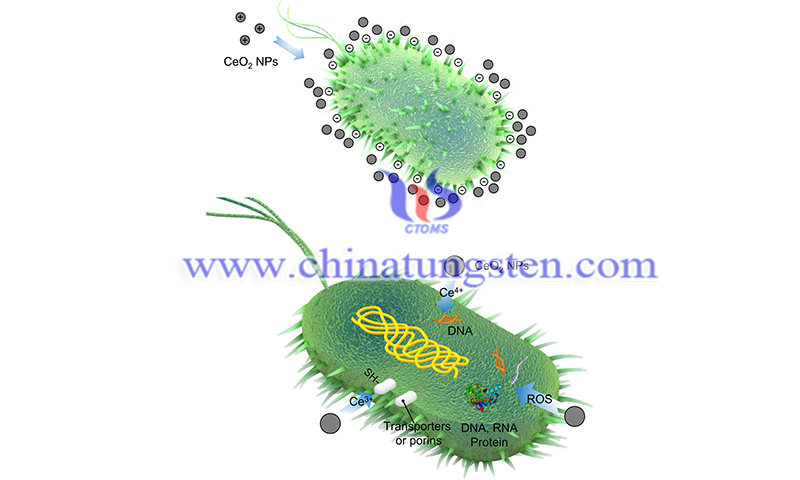Rare Earth-Doped Antimicrobial Coatings to Reduce Viral Transmission
- Details
- Category: Tungsten's News
- Published on Tuesday, 16 November 2021 21:52
The Covid-19 pandemic has demonstrated an urgent need for antiviral and antimicrobial coatings on surfaces in public places and healthcare environments, and recent research published in Microbial Biotechnology demonstrates a method for the preparation of rare earth-doped antimicrobial coatings to address this problem.
Given the multiple outbreaks of infectious diseases experienced globally, it is clear that the surface of objects is a source of pathogen transmission. Surface coatings with antiviral and antimicrobial properties reduce the risk of virus transmission and kill biological structures and microorganisms on contact. They hinder the growth of microorganisms through the disruption of cell membranes.
In the case of Covid-19, studies have shown that the virus can remain active on frequently touched stainless steel and plastic surfaces for up to 72 hours, creating an urgent need for surface coatings with antiviral properties.

Zinc oxide (ZnO) has powerful antibacterial and antiviral properties. In recent years, zinc oxide has been intensively explored as an active ingredient in many antibacterial and antiviral chemicals. Numerous toxicity studies have found that ZnO is virtually non-toxic to humans and animals, but is very effective in disrupting the cellular envelopes of microorganisms.
The microbial killing mechanism of zinc oxide can be attributed to several properties. Partial dissolution of ZnO particles releases Zn2+ ions, which disrupt further antimicrobial activity even in other microorganisms present, as well as direct contact with the cell wall and the release of reactive oxygen species.
Creating surfaces with superior antimicrobial properties using rare earth-doped ZnO nanoparticles and polyurea coatings. The team of Li, Liu, Yao, and Narasimalu proposed a method to rapidly prepare antimicrobial polyurea coatings by introducing rare earth-doped ZnO nanoparticles, which are formed by mixing with rare earths in nitric acid.
ZnO nanoparticles doped with cerium (Ce), praseodymium (Pr), lanthanum (LA) and gadolinium (Gd) were found to be 85% effective against P. aeruginosa and E. Coli bacterial strains.

These nanoparticles also maintained 83% microbicide effectiveness, even after 25 minutes of UV irradiation. The doped ZnO nanoparticles explored in the study may show better UV response and thermal response to temperature changes. Bioassays and surface characterization also provided evidence that the surfaces maintained their antimicrobial activity after repeated use.
Rare earth-doped antimicrobial coatings also host high durability and low risk of surface flaking. The durability of the surfaces coupled with the antimicrobial activity and environmental response of the ZnO nanoparticles provide an improvement in their potential for practical application in a variety of environments and industries.
This research shows great potential for controlling future outbreaks and stopping the spread of highly pathogenic avian influenza in medical settings. They also have potential for applications in the food industry, providing antimicrobial packaging and fibers that improve the quality and shelf life of foods.
- Rare Earth Manufacturer & Supplier, Chinatungsten Online: www.chinatungsten.com
- Tungsten News & Prices of China Tungsten Industry Association: www.ctia.com.cn
- Molybdenum News & Price: news.molybdenum.com.cn
- Tel.: 86 592 5129696; Fax: 86 592 5129797; Email: sales@chinatungsten.com



 sales@chinatungsten.com
sales@chinatungsten.com